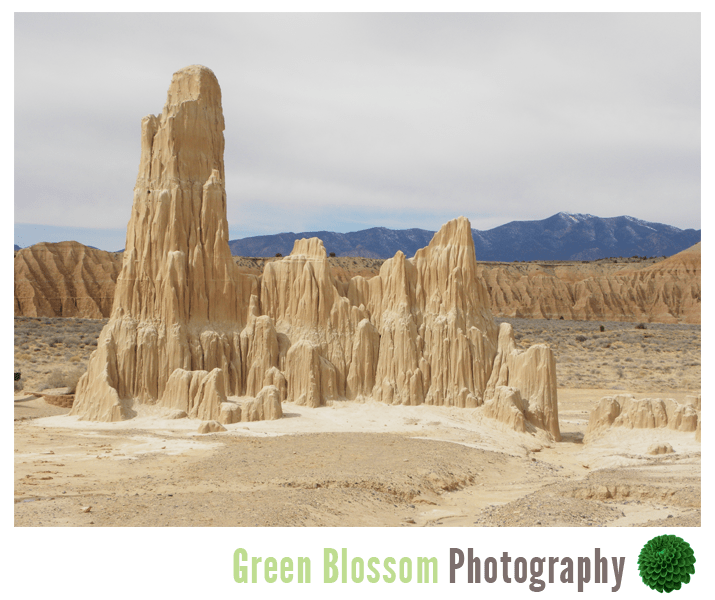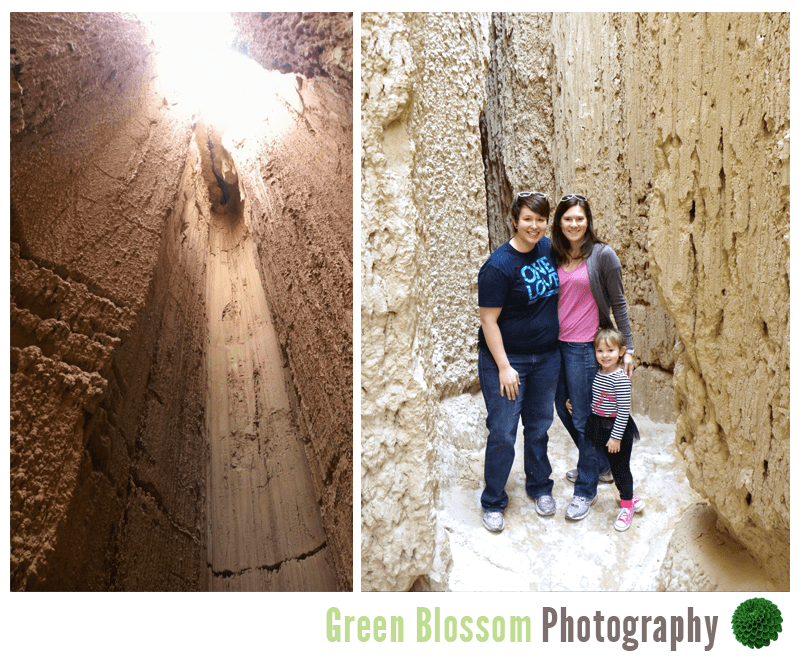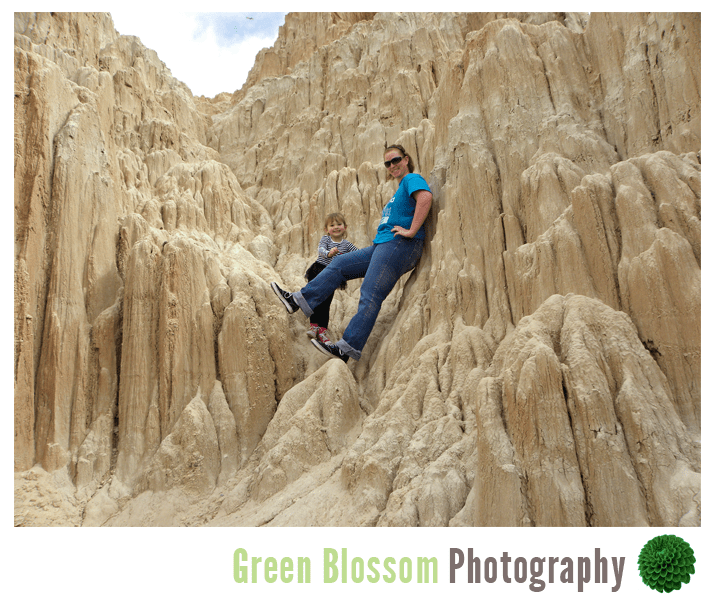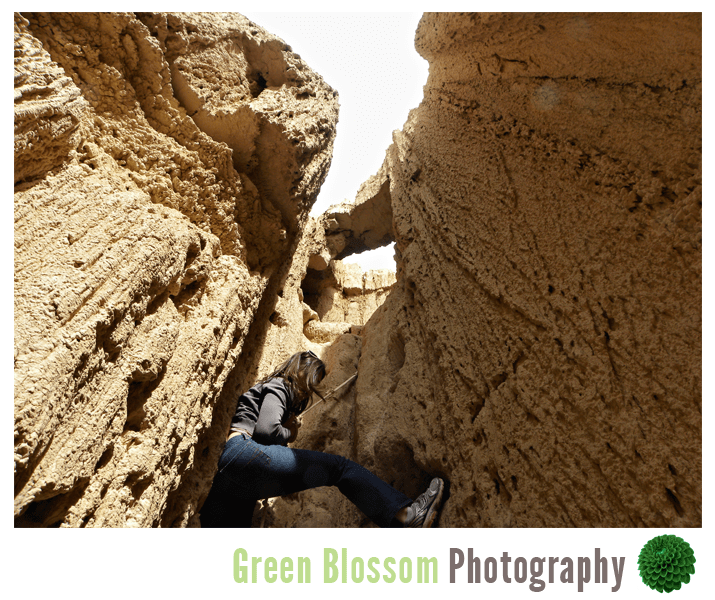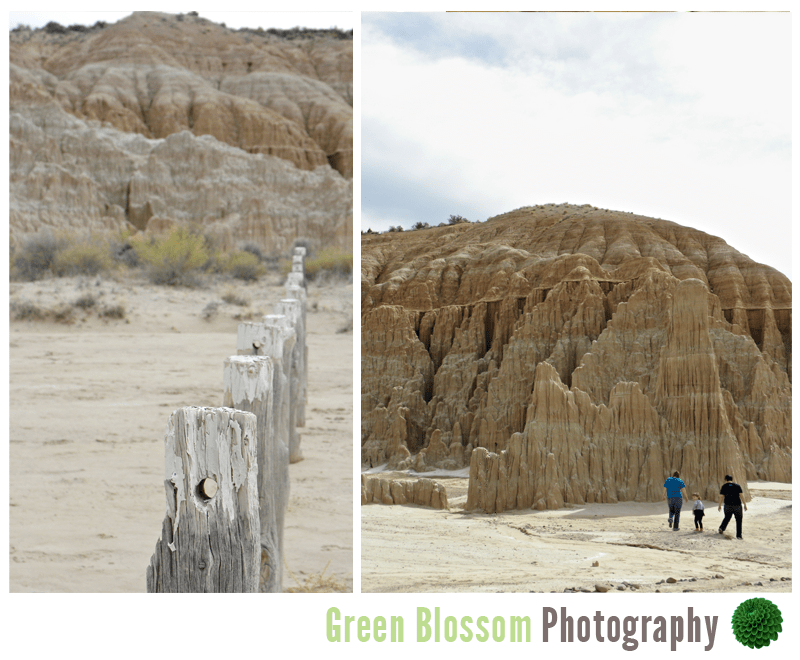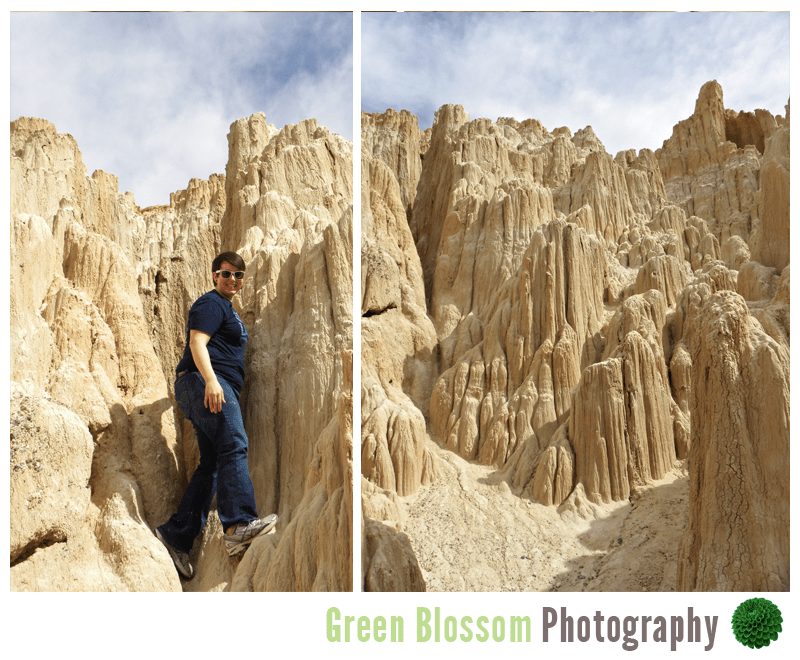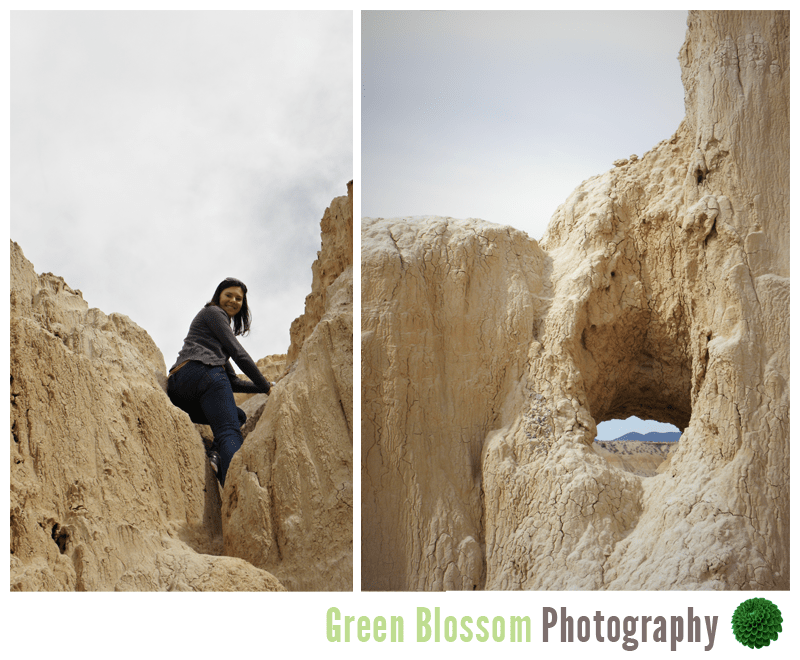Cathedral Gorge, Nevada
While we were in Nevada a few weeks ago, Dani took us to a very cool state park, Cathedral Gorge. According to the Nevada State Park website, the formations were formed millions of years ago during a volcanic eruption.
The spires and buff-colored cliffs are the result of geologic processes occurring over tens of millions of years. The beauty enjoyed today had violent beginnings, starting with explosive volcanic activity that, with each eruption, deposited layers of ash hundreds of feet thick. The source of this ash, the Caliente Caldera Complex, lies to the south of Cathedral Gorge.
About five million years after the eruptions ceased, block faulting, a fracture in the bedrock that allows the two sides to move opposite each other, shaped the mountains and valleys prevalent in Nevada today. This faulting formed a depression, now known as Meadow Valley.
Over time, the depression filled with water creating a freshwater lake. Continual rains eroded the exposed ash and pumice left from the volcanic activity, and the streams carried the eroded sediment into the newly formed lake.
The formations, made of silt, clay and volcanic ash, are the remnants of that lake. As the landscape changed and more block faulting occurred, water drained from the lake exposing the volcanic ash sediments to the wind and rain, causing erosion of the soft material called bentonite clay.

